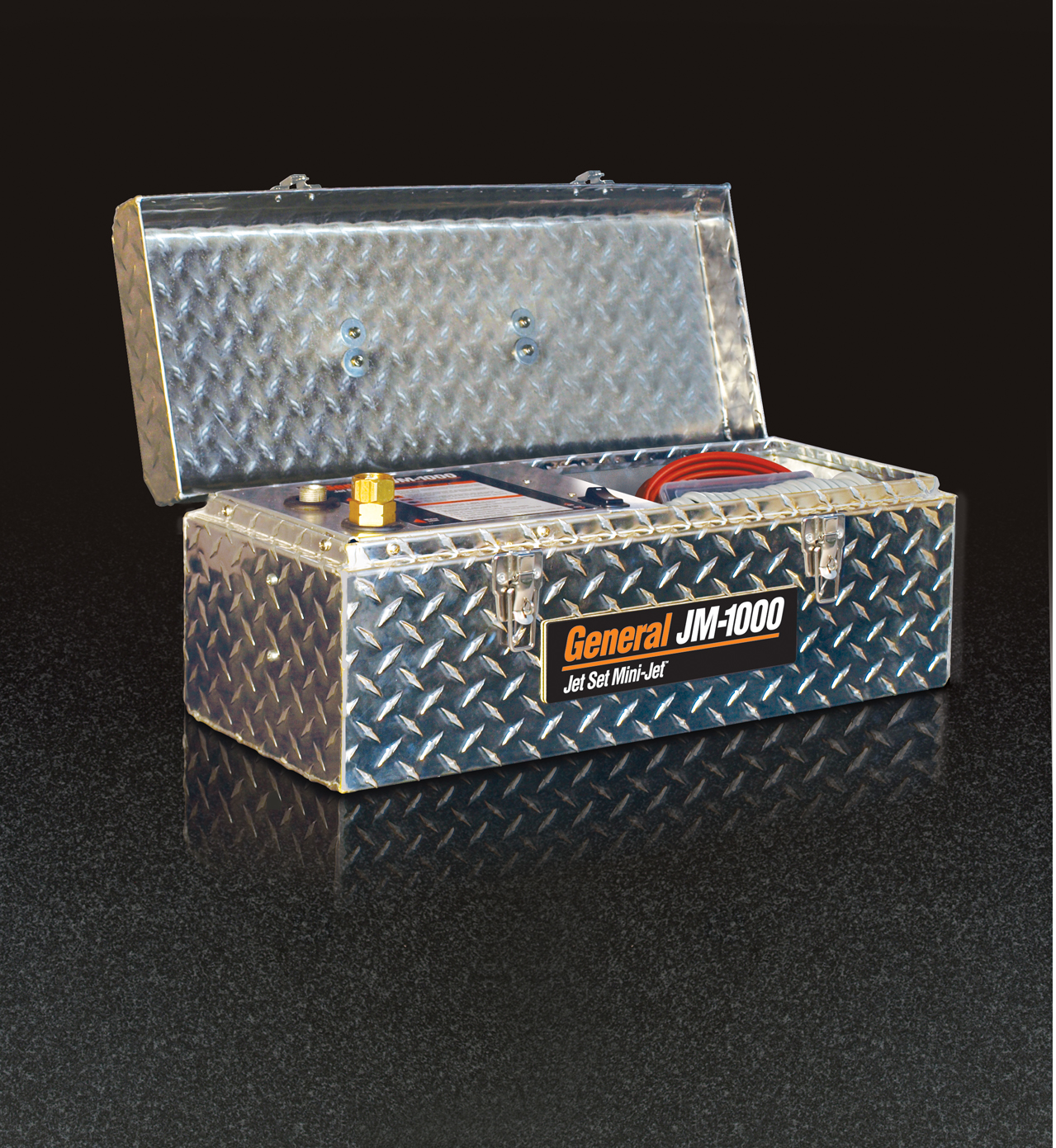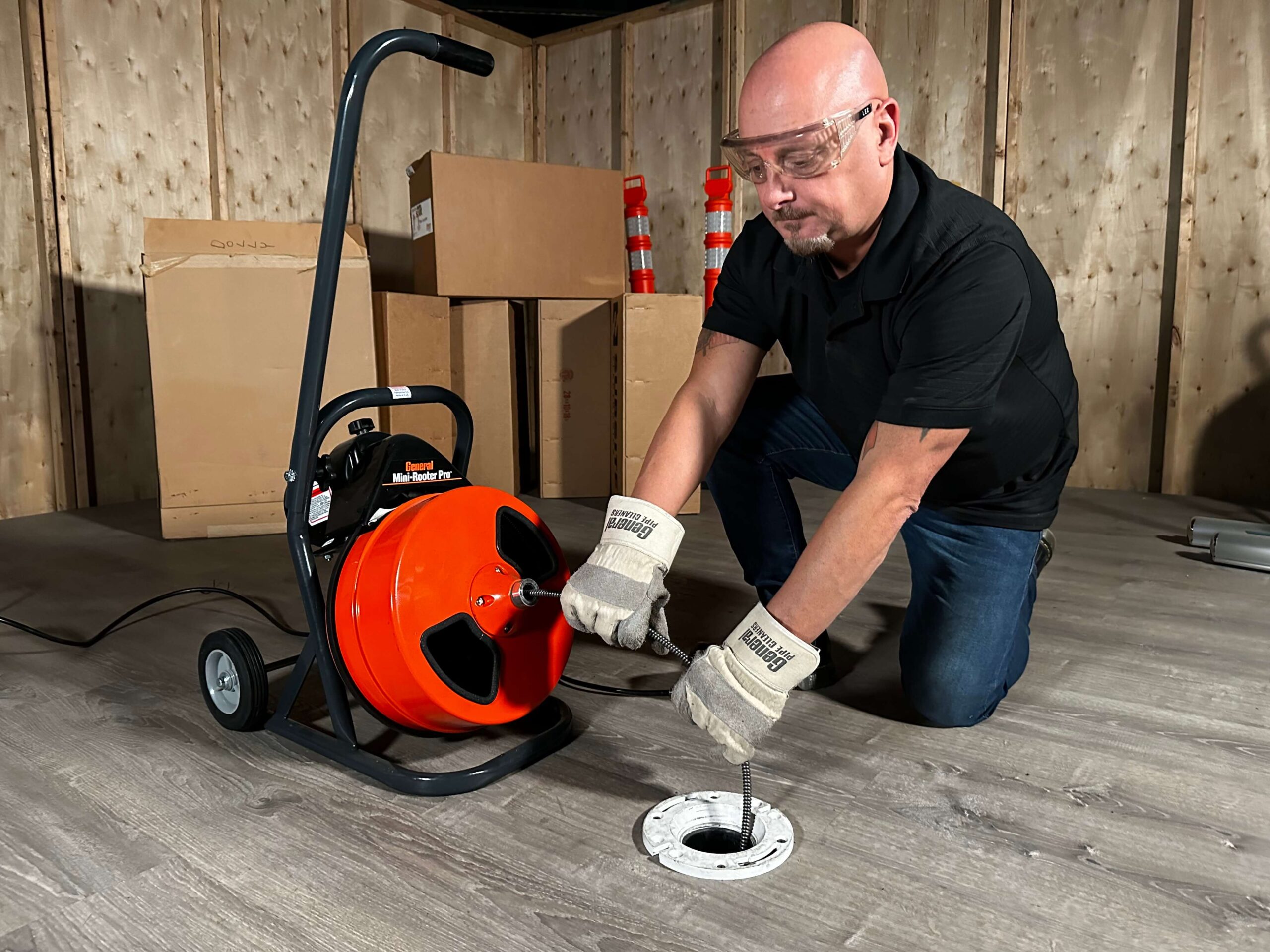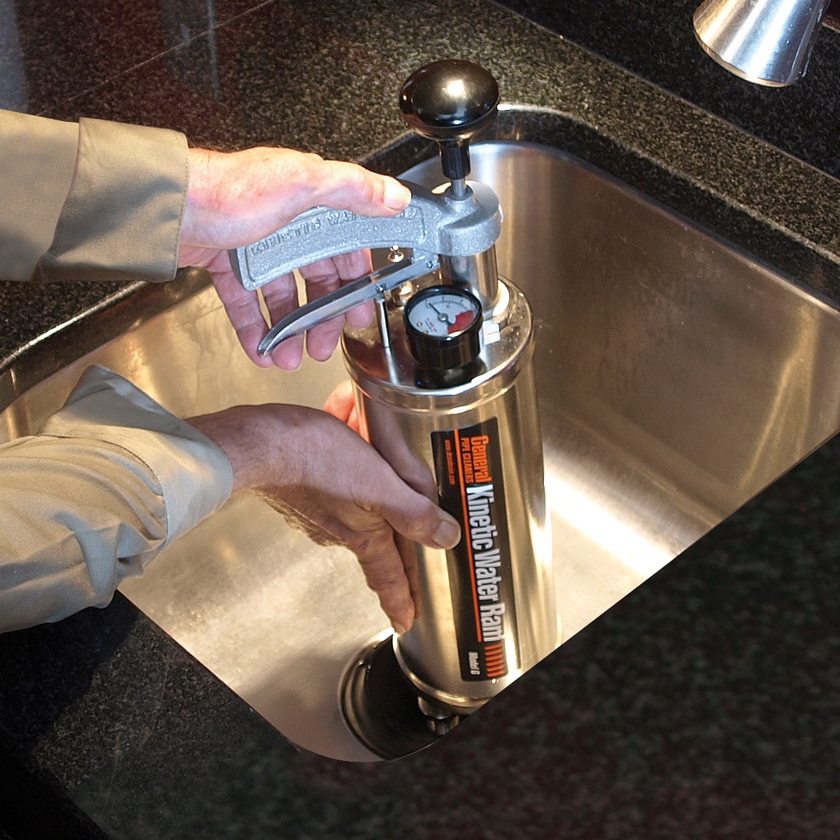In this four-part series, we are taking a look at what you need to know about drain cleaning. Today, we will be telling you how to select the right equipment for the job.
How Do You select the Right Equipment for The Job?
Good question. If you use a drain cleaning tool in the wrong application, it won’t clear the drain properly, and you could damage the machine, or worse, injure yourself. Here’s a list of clogged drain problems, and the recommended drain cleaning tools for each.
Sink or laundry drains: A handheld drain cleaner with a 1/4″ or 5/16″ cable is the right tool for this application. The snake has the right flexibility for small drain lines with lots of bends. It is best to remove the trap under the sink first. Be careful there are no chemicals in the drain. The acids in these liquids can destroy your tools quickly. Start with a small cutter like the arrowhead to get the water flowing, then follow up with a U-cutter or side cutter to scrape the pipe walls clean.
Toilets: The best tool for a clogged toilet is a closet auger. Much more reliable than a plunger, the snake is flexible enough to get around the trap, yet strong enough to do the job. You can either dislodge the stoppage or retrieve objects like diapers and children’s toys that are frequently the cause of toilet clogs. Be sure to use a professional grade closet auger that has the durability you require.
Slow draining tubs and showers: The best tool for this is not a snake, but rather a Water Ram. Snakes have a hard time getting through the drum trap under a tub. The Water Ram uses compressed air to create a shock wave that simply follows the path of the water. Think of it as a really powerful plunger. There’s no pressure build-up so it won’t harm pipes.
Tree roots: For difficult stoppages you should use a larger diameter, heavy-duty cable that has the torque to cut through tree roots. It is best to use a 5/8″ or 3/4″ Flexicore inner core cable for large drum-type machines, or a 1-1/4″ sectional cable with sectional machines. Start with a smaller cutter like the spearhead or 2″ U-Cutter to get the water flowing. Then switch to a larger root cutter like a heavy-duty saw blade or root ripper. Don’t be impatient. Guide the cable slowly back and forth to cut through the stoppage thoroughly. If you go too fast, you risk getting caught and damaging the cable.
Grease clogs: It’s referred to as a self-healing stoppage because when a cable goes through it, the clog closes up again. To really clear a grease clog properly, you should be using a water jet. The high-pressure water cuts the grease off the walls of the pipe and the high-water flow flushes it away. Water Jets make the hose vibrate so it can overcome the friction in the drain and slide more easily around tight bends. The thrust of the nozzle pulls the hose through the soft blockage. As you pull the hose back the high-pressure spray cuts the grease away from the pipe walls and scours them clean.
Ice: If the ice is in a metal water supply line, you can use a pipe thawing machine that puts a low voltage but high current through the metal pipe to safely melt the stoppage. If the stoppage is in a waste line, it’s nearly impossible to cut an ice clog out of a drain line with a snake. But it’s easy to melt an ice clog with a water jet. The jet nozzle has a number of rear jets to pull the hose to the stoppage, and one or more forward jets to melt the ice and break up the stoppage.
Questions? Call the Drain Brains at 800-245-6200.





